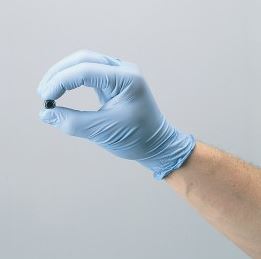We use cookies to make your experience better. To comply with the new e-Privacy directive, we need to ask for your consent to set the cookies. Learn more.
Meeting FDA Cleanliness Requirements at Food Processing Facilities
The General Provisions of Title 21 of the Code of Federal Regulations — otherwise known as the FDA's "good manufacturing practice" standards — devotes an entire section to the subject of personnel. The section largely concerns cleanliness standards for staff at plants that manufacture, pack, or even just hold food.
This FDA regulation does address a few other personnel issues, but only in passing; its provisions on disease control, educating/training, and supervisory responsibility amount to only 175 words. Language devoted to worker cleanliness runs to almost twice that — which means that cleanliness is exceptionally important to the FDA.
If your facility deals with food for human consumption, you need to take steps to keep your staff compliant with these FDA cleanliness guidelines. Here are a few tips to improve FDA compliance:
Confine food, beverages, and gum to the break room, and keep your facility tobacco-free.
Part (b)(8) of Sec. 110.10 warns facility managers to keep food, gum, drinks, and tobacco away from food and equipment washing areas. It's best to limit possible contaminants to a clearly designated break room.
Provide plenty of hand-washing stations.
The Centers for Disease Control and Prevention call hand washing "one of the best ways to prevent the spread of infection and illness," and the FDA agrees. They require staff to wash hands before each shift, before returning to workstations after even a momentary absence, and whenever hands may have gotten dirty. Help your staff comply by providing conveniently located sinks, and check those soap dispensers frequently.
Post hair net and bouffant cap dispensers at entrances.
The FDA requires workers who have contact with food to wear hair restraints, and posting a wall-mounted dispenser for hair coverings helps employees to remain compliant. A quick definition: hair nets cover hair with elastic mesh, while bouffant caps are made of a porous spun material, and poof out around hairstyles. Either may be appropriate for your staff.
Don't neglect the beard nets.
Facial hair is back into fashion, as the U.S. practice of growing moustaches every “Movember” in support of men’s health demonstrates. This trend hasn't escaped the FDA's notice. They include "beard covers" in their list of hair restraints that may be appropriate for food-processing staff. In some ways, a beard cover may be more effective at preventing contamination than a hair net. As the Tampa Bay Times recently reported, beard hairs are six times more likely to fall out than hairs on the head.
Provide alternatives to latex gloves.
Food handling gloves don't necessarily have to be made from latex, according to the FDA, but gloves should be "impermeable." Because of the prevalence of latex allergies, you should keep a good supply of non-latex gloves available for workers. Nitrile gloves are good substitute.
This is by no means an exhaustive list of the food safety regulations facility managers should be aware of, but it’s a good start. Dig deeper by reading the FDA's 2013 Food Code. To learn even more about FDA compliance, download the Small Business Guide to FDA, or check out the FDA’s resource page for the food industry.
References:
2013 Food Code. College Park, MD: U.S. Public Health Service, Food and Drug Administration, 2013. PDF. 25 Aug. 2015.
“Current Good Manufacturing Practice in Manufacturing, Packing, or Holding Human Food: Personnel.” 29 C.F.R. § 110.10 (1 Apr. 2015). Web. 25 Aug. 2015.
Reiley, Laura. “Beards are Big — and in Restaurants, so are Beard Hairnets.” Tampa Bay Times, 12 May 2015. Web. 25 Aug. 2015.
“Wash Your Hands.” CDC. Centers for Disease Control and Prevention, U.S. Department of Health & Human Services, 11 Dec. 2013. Web. 25 Aug. 2015.

